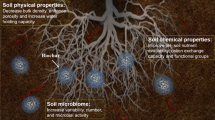Abstract
The cultivation of shrub willow (Salix spp.) bioenergy crops is being commercialized in North America, as it has been in Europe for many years. Considering the high genetic diversity and ease of hybridization, there is great potential for genetic improvement of shrub willow through traditional breeding. The State University of New York—College of Environmental Science and Forestry has an extensive breeding program for the genetic improvement of shrub willow for biomass production and for other environmental applications. Since 1998, breeding efforts have produced more than 200 families resulting in more than 5,000 progeny. The goal for this project was to utilize a rapid, low-cost method for the compositional analysis of willow biomass to aid in the selection of willow clones for improved conversion efficiency. A select group of willow clones was analyzed using high-resolution thermogravimetric analysis (HR-TGA), and significant differences in biomass composition were observed. Differences among and within families produced through controlled pollinations were observed, as well as differences by age at time of sampling. These results suggest that HR-TGA has a great promise as a tool for rapid biomass characterization.




Similar content being viewed by others
References
Perlack, R. D., Wright, L. L., Turhollow, A., Graham, R., Stokes, B., & Erbach, D. (2005). Tech. Rep. ORNL/TM-2005/66. Oak Ridge, TN: Oak Ridge National Laboratory.
Volk, T. A., Verwijst, T., Tharakan, P. J., Abrahamson, L. P., & White, E. H. (2004). Frontiers in Ecology and the Environment, 2, 411–418.
Volk, T. A., Abrahamson, L. P., Nowak, C. A., Smart, L. B., Tharakan, P. J., & White, E. H. (2006). Biomass and Bioenergy, 30, 715–727.
Smart, L. B., Volk, T. A., Lin, J., Kopp, R. F., Phillips, I. S., Cameron, K. D., et al. (2005). Unasylva, 221(56), 51–55.
Kopp, R. F., Smart, L. B., Maynard, C. A., Isebrands, J. G., Tuskan, G. A., & Abrahamson, L. P. (2001). The Forestry Chronicle, 77, 287–292.
Argus, G. W. (1997). Infrageneric classification of Salix (Salicaceae) in the New World. Ann Arbor, MI: The American Society of Plant Taxonomists.
Kopp, R. F. (2000). Ph.D. thesis, State University of New York College of Environmental Science and Forestry.
Himmel, M. E., Ding, S. Y., Johnson, D. - K., Adney, W. S., Nimlos, M. R., Brady, J. W., et al. (2007). Science, 315, 804–807.
US DOE (2006). US Department of Energy Office of Science and Office of Energy efficiency and renewable energy. Available at: doegenomestolife.org/biofuels/.
Labbe, N., Rials, T. G., Kelley, S. S., Cheng, Z. - M., Kim, J. - Y., & Li, Y. (2005). Wood Science and Technology, 39, 61–77.
Hames, B. R., Thomas, S. R., Sluiter, A. D., Roth, C. J., & Templeton, D. W. (2003). Applied Biochemistry and Biotechnology, 105, 5–16.
Kelley, S., Rials, T., Snell, R., Groom, L., & Sluiter, A. (2004). Wood Science and Technology, 38, 257–276.
Tuskan, G. A., West, D., Bradshaw, H. D., Neale, D., Sewell, M., Wheeler, N., et al. (1999). Applied Biochemistry and Biotechnology, 77, 55–65.
Shafizadeh, F., & Chin, P. P. S. (1977). In I. S. Goldstein (Ed.) Wood technology: Chemical aspects (vol. 43, pp. 57–81). Washington, DC: American Chemical Society Symposium Series.
Cozzani, V., Lucchesti, A., Stoppato, G., & Maschio, G. (1997). Canadian Journal of Chemical Engineering, 75, 127–133.
Stipanovic, A. J., Goodrich, J., & Hennessy, P. (2004). In American Chemical Society Symposium on “Novel Analytical Tools in the Characterization of Polysaccharides”. Cellulose and Renewable Materials Division.
Kopp, R. F., Smart, L. B., Maynard, C., Tuskan, G., & Abrahamson, L. P. (2002). Theoretical and Applied Genetics, 105, 106–112.
Cervera, M. T., Remington, D., Frigerio, J. - M., Storme, V., Ivens, B., Boerjan, W., et al. (2000). Canadian Journal of Forest Research, 30, 1608–1616.
Cervera, M. T., Storme, V., Soto, A., Ivens, B., Van Montagu, M., Rajora, O. P., et al. (2005). Theoretical and Applied Genetics, 111, 1440–1456.
Blankenhorn, P. R., Bowersox, T. W., Kuklewski, K. M., Stimely, G. L., & Murphy, W. K. (1985). Wood and Fiber Science, 17, 148–158.
Kenney, W. A., Gambles, R. L., & Sennerby-Forsse, L. (1992). In C. Mitchell, J. Forb-Robertson, T. Hinckley, & L. Sennerby-Forsse (Eds.) Ecophysiology of short rotation forest crops pp. 267–284. Elsevier: Essex, England.
Adler, A., Verwijst, T., & Aronsson, P. (2005). Biomass and Bioenergy, 29, 102–113.
Kiemle, D. J., Stipanovic, A. J., & Mayo, K. E. (2004). In P. Gatenholm, & M. Tenkanen (Eds.), ACS Symposium Series 864 pp. 122–139. Washington, DC: American Chemical Society.
Acknowledgments
This work was funded by the McIntire–Stennis Cooperative Forestry Research Program of the US Department of Agriculture. The authors would also like to acknowledge funding of the willow breeding program at SUNY-ESF from the New York State Energy Research and Development Authority (NYSERDA). Appreciation is also expressed to Dr. Larry Abrahamson, Dr. Tim Volk, Dr. Ed White, and Dr. Bill Winter for their support and advice as collaborators with this research and to Mark Appleby and Ken Burns for excellent technical support.
Author information
Authors and Affiliations
Corresponding author
Rights and permissions
About this article
Cite this article
Serapiglia, M.J., Cameron, K.D., Stipanovic, A.J. et al. High-resolution Thermogravimetric Analysis For Rapid Characterization of Biomass Composition and Selection of Shrub Willow Varieties. Appl Biochem Biotechnol 145, 3–11 (2008). https://doi.org/10.1007/s12010-007-8061-7
Received:
Accepted:
Published:
Issue Date:
DOI: https://doi.org/10.1007/s12010-007-8061-7




